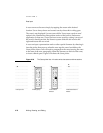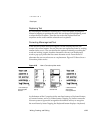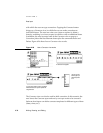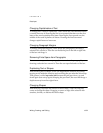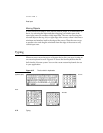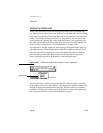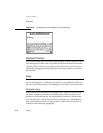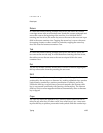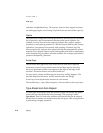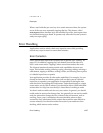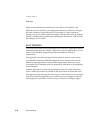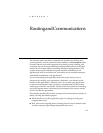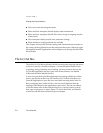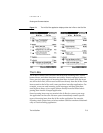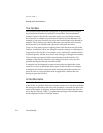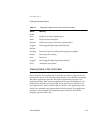
CHAPTER 6
Data Input
6-36 Typing
and other nonalphabetic keys. The caps key locks on when tapped and stays
on until tapped again; even closing a keyboard does not turn off the caps key.
Option 6
The option key changes the character produced by the next tap on a character
key to produce a set of international characters and special symbols. For
example, in many Newton fonts, option-4 produces the ¢ symbol, option-r
produces ®, and option-g produces ©. Like the Newton shift key, the Newton
option key is not pressed concurrently with pressing a character key. The
Newton option key locks on when tapped and releases automatically when a
character key is tapped. Option can be used together with shift, in combination
with a character key, to produce still other symbols. For example, option-shift-?
produces the Spanish ¿ character.
Arrow Keys 6
The left arrow and right arrow keys move the text caret left or right one
character at a time. If a user selects some text and then taps an arrow key,
the text is deselected and the caret appears at the right or left edge of the
selection. This action doesn’t move the selected text.
If a user selects a shape and then taps an arrow key, nothing happens. The
selected shape does not move, and the selection does not change.
Arrow keys never duplicate the function of scroll arrows.
The modifier keys—caps, shift, and option—have no effect on the arrow keys.
Type-Ahead and Auto-Repeat 6
If a user types more quickly than the Newton system can handle, the system
queues the extra keystrokes for later processing. This queuing is called
type-ahead. There’s a limit to the number of keystrokes that can be queued,
but this limit is usually not reached unless the user types while an application
is performing a lengthy operation.



